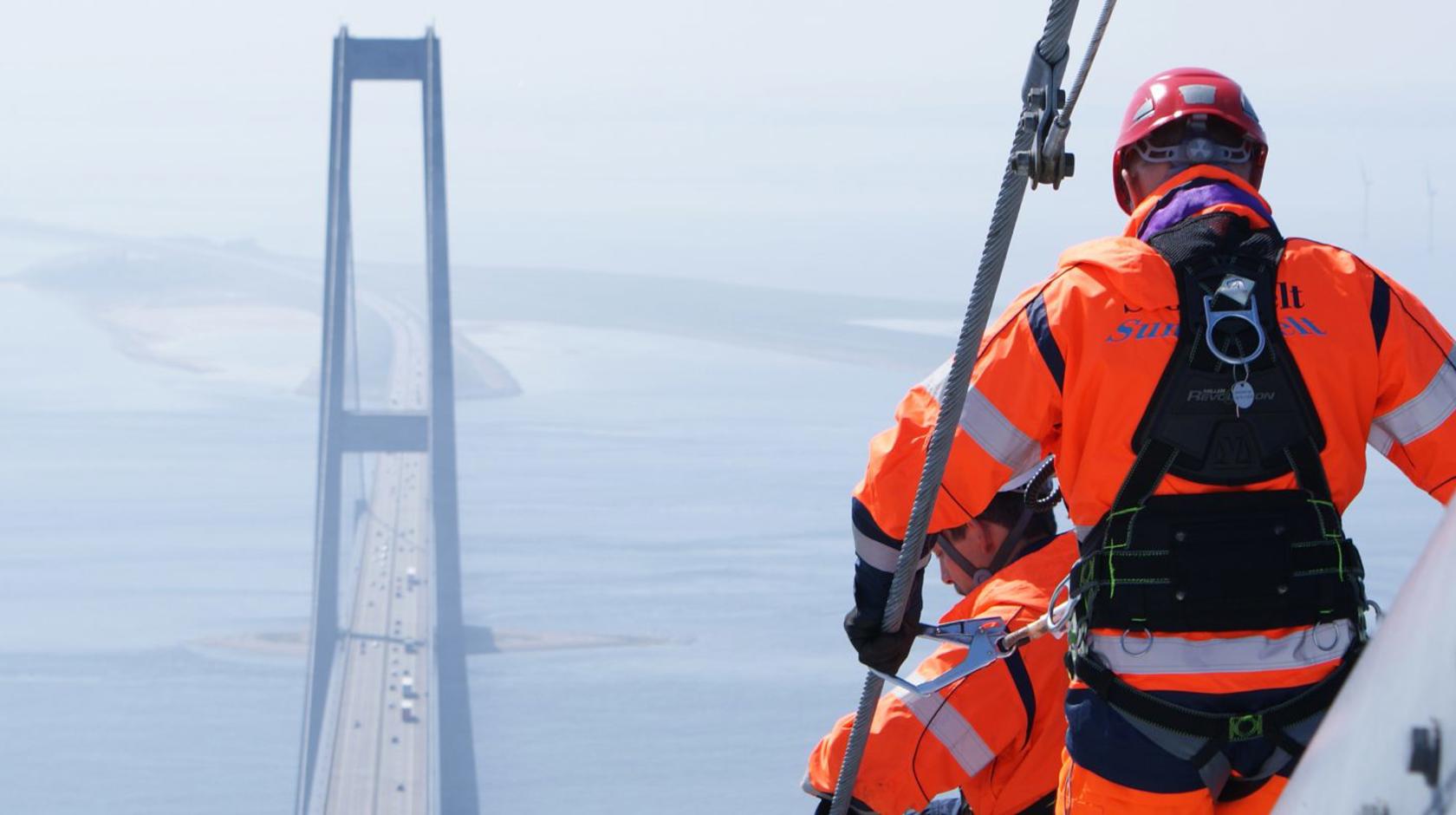Source: Børsen, 5 June 2019
A new collaboration between IBM and Sund & Bælt will ensure far more efficient maintenance and operation of the world’s largest infrastructure facilities. Experience from the Storebælt fixed link will lie at the core of a piece of newly developed software that will launch in the global market and is expected to be a sales hit. IBM compares the collaboration with Mærsk’s blockchain-strategy where IBM also provides the technology. Artificial Intelligence and big data from 15,000 sensors on the bridge will help to generate substantial and more efficient solutions.
According to IBM, the potential is enormous and from a Danish perspective, the story is interesting. IBM has used experience from the Storebælt and Øresund bridges as its starting point. The experience also includes the adjoining railways, the motorways and tunnels which together constitute the four main infrastructure areas.
15,000 sensors and measuring points
IBM is to provide an advanced monitoring and maintenance programme for Sund & Bælt. 15,000 sensors and measuring points have been installed on the Storebælt Bridge which measure everything from wind speed and vibrations to wear and tear on the road. This massive pool of knowledge is then processed and systematised in computers. The plan is for the know-how to be deployed in the U.S. which has 47,000 bridges, of which nearly 5,000 are in a poor state of repair.
"It’s not so often that we build something in Denmark that we can export from here. The blockchain collaboration with Mærsk also began here and that’s fantastic!” says Henrik Bodskov, CEO of IBM’s Danish department.
The inspection drones on the bridges are already a familiar sight in the media, but the technical solutions comprise a range of other advanced sensors, etc. which send out an alert when intervention against wear and tear is required. At IBM, the technology is known as Internet of Things. Data is collected and refined by Artificial Intelligence, which learns from developments in the bridge’s lifespan.
At IBM, the potential that lies within Artificial Intelligence is known as Watson. Sales Director Boy Steiner from IBM is in the process of liaising with potential customers, and he expects to see significant advances this year. The first version of the software will be launched just after the summer holidays, with the next at the start of 2020. In his opinion, there is a significant technological lag in infrastructure and IBM’s solution is, according to him, more or less the only product in the market.
Other industries are much further forward, i.e. the aviation industry, but there are now possibilities for the infrastructure area where there are savings to be made and longer service life assured. This is of major benefit to bridge owners. Instead of increased maintenance costs in the order of 1-2 per cent per year, about 2 per cent per year can be saved.
IBM’s reasons for entering the market are clear:
"We’re developing a module that can be sold. There are substantial sums to be made if we market it on a global basis,” says Boy Steiner.
Earnings perspective
"I can’t imagine anything under 100 million dollars for us on a global basis,” says Steiner.
Sund & Bælt has already made significant cuts in operating costs and, over the next five years, will achieve 20 per cent savings on the original operating costs for maintenance primarily owing to digitisation and IBM’s first developed system, which forms the basis for future exports. Operating expenses have been reduced from DKK 500 million to DKK 400 million, says Mikkel Hemmingsen, CEO, Sund & Bælt.
"When we started our digitisation process two and a half years ago, we decided to see how far digitisation could take us. We could see that our infrastructure was getting older, but we didn’t really want to spend more money on it. That said, compromising on quality wasn’t an option. We could also see that the knowledge we had accumulated was in demand elsewhere. We wanted to make this accessible to others through digitisation while addressing the issue of ageing bridges. This is why we embarked on this project, explains Hemmingsen, adding:
"The technology is almost in place and big data is available. What we can do now is not found anywhere else in the world.”
